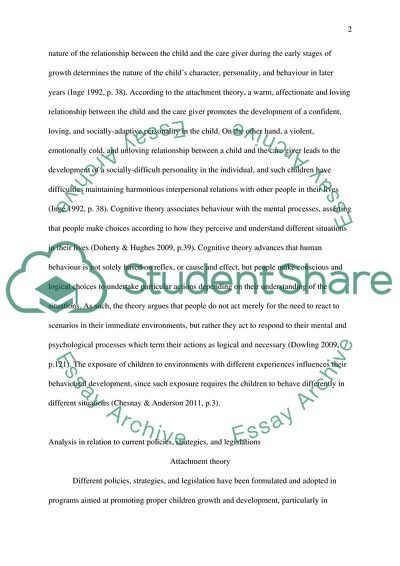Cite this document
(Attachment Theory and Cognitive Theory on Childrens Behaviour Literature review Example | Topics and Well Written Essays - 2750 words, n.d.)
Attachment Theory and Cognitive Theory on Childrens Behaviour Literature review Example | Topics and Well Written Essays - 2750 words. https://studentshare.org/education/1760598-through-comparison-analyse-and-critically-evaluate-2-of-these-theories-on-childrens-behaviour
Attachment Theory and Cognitive Theory on Childrens Behaviour Literature review Example | Topics and Well Written Essays - 2750 words. https://studentshare.org/education/1760598-through-comparison-analyse-and-critically-evaluate-2-of-these-theories-on-childrens-behaviour
(Attachment Theory and Cognitive Theory on Childrens Behaviour Literature Review Example | Topics and Well Written Essays - 2750 Words)
Attachment Theory and Cognitive Theory on Childrens Behaviour Literature Review Example | Topics and Well Written Essays - 2750 Words. https://studentshare.org/education/1760598-through-comparison-analyse-and-critically-evaluate-2-of-these-theories-on-childrens-behaviour.
Attachment Theory and Cognitive Theory on Childrens Behaviour Literature Review Example | Topics and Well Written Essays - 2750 Words. https://studentshare.org/education/1760598-through-comparison-analyse-and-critically-evaluate-2-of-these-theories-on-childrens-behaviour.
“Attachment Theory and Cognitive Theory on Childrens Behaviour Literature Review Example | Topics and Well Written Essays - 2750 Words”. https://studentshare.org/education/1760598-through-comparison-analyse-and-critically-evaluate-2-of-these-theories-on-childrens-behaviour.


